Hokkaido"nature & sightseeing" Information
"Gateway to Ainu Culture & Home of Exquisite Shiraoi Beef"(Shiraoi Town)
Overview
Shiraoi Town is located in southwestern Hokkaido, midway
between Tomakomai City—an industrial hub—and Noboribetsu City, known for
Jigokudani (“Hell Valley”) and hot springs. It is about 70 km (roughly one
hour) from central Sapporo via expressway, and is well-connected by JR rail
lines and national highways.
Approximately 75% of the town is covered by forests,
offering rich natural surroundings. Shiraoi is also home to Upopoy (the
Symbolic Space for Ethnic Harmony), a national center established in 2020 to
learn about, preserve, and promote Ainu culture, brought by the indigenous Ainu
people who developed mainly in Hokkaido.
Reflecting this cultural heritage, the town is known for its thriving Ainu
woodcarving and embroidery crafts, and Ainu symbolic patterns can be seen in
many places throughout the area.
A specialty product of Shiraoi is its premium branded beef,
Shiraoi Beef.
In addition, the town has been finding creative new uses
for former school buildings. Shiraoi offers many attractions that cannot be
found elsewhere—let’s explore some in detail.
Highlights of Shiraoi
1. Nature's Beauty-See, Experience, and Be Moved
In the north, 1,000-meter-class peaks such as Mt. Tarumae,
Mt. Horohoro, and Mt. Orofure rise within Shikotsu-Toya National Park, while
the southern foothills face the Pacific Ocean. Among municipalities within the
park, Shiraoi ranks third in size after Sapporo and Chitose.
One of the park’s unique features is Lake Kuttara, in the
Kojohama area. This caldera lake, with a circumference of 8 km, has no
inflowing or outflowing rivers and is said to be the most perfectly circular
lake in Japan. It is also famous for its high water clarity, earning it the
nickname “mystery lake.”
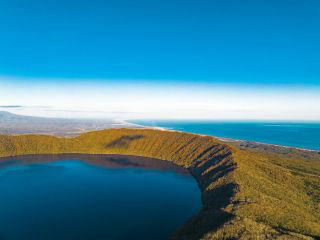
Lake Kuttara
Other highlights include Inkura Falls—selected as one of Japan’s Top 100
Waterfalls—making the park a popular sightseeing destination.
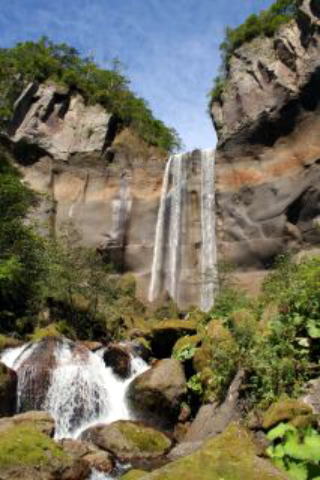
Inkura Falls
Closer to the town center is Lake Poroto, surrounded by
forests. It offers safe, scenic walking trails for locals, campgrounds with
bungalows, and a natural setting where visitors can enjoy the outdoors amid the
town’s treasured lakes and woods.
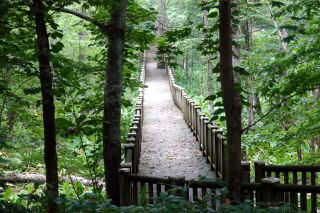
Walking Course(Poroto Forest)
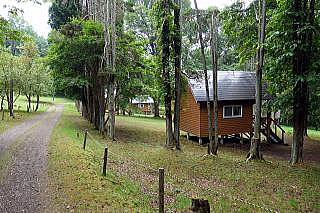
Campsite (Poroto Forest)

Wakasagi smelt fishing in a winter(Lake Poroto)
2. Culture Treasures - Learning the Roots of Hokkaido and Shiraoi
① Upopoy – National Ainu Museum and Park
In mainland Japan, history moved from the Jomon period to Yayoi, Kofun,
Asuka, Nara, Heian, Kamakura, and beyond, each with its own distinctive
culture.
In contrast, Hokkaido—including Shiraoi—transitioned from the Jomon period to
the Epi-Jomon, Satsumon, and Okhotsk cultural phases. Around the late Kamakura
period in mainland terms, a new culture emerged: Ainu culture, sustained
to this day despite many hardships.
The Ainu led a hunting- and gathering-based life, held deep
reverence for bears, and believed that gods dwell in all things. The Shiraoi
area was home to Ainu settlements (kotan) centered around what is now the town
office.
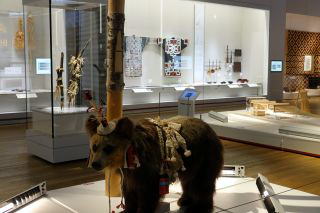
Ainu Culture and Bear(National Museum)
On the shores of Lake Poroto, Upopoy (“Let’s sing
together” in Ainu) was established in 2020 by the Japanese government and the
Ainu people as a national base for learning, inheriting, and sharing Ainu
culture. The grounds feature everything needed to understand the Ainu way of
life:
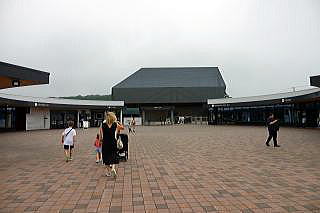
"Upopoy"entrance
- The National Ainu
Museum with exhibits of traditional clothing, ritual tools, and symbolic
patterns
- Traditional houses (chise)
- Performances of dances
and music passed down through generations
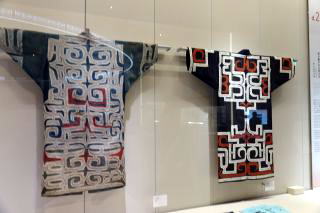
Traditional clothing
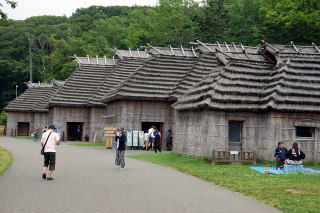
Traditinal houses(chise)

Performances of Dances
Upopoy attracts many visitors from Japan and abroad who come to experience
the unique world of Ainu culture.
② Sendai -Han Shiraoi Original Fort Museum
Why does Shiraoi have the remains of an impressive fort? The answer lies
in the late Edo period.
In 1856, fearing Russian expansion from the north, the shogunate ordered
the Sendai -Han to build a fort in what is now Jinyamachi, Shiraoi. This
is considered the founding year of Shiraoi Town.
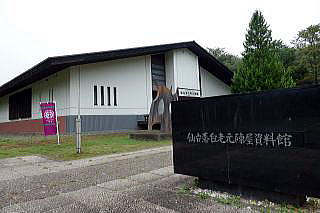
Museum
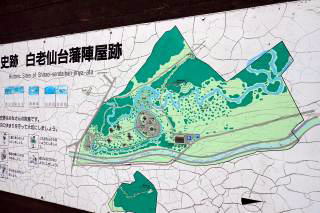
Signboard of Sendai-han Original Fprt
Though an invasion never occurred, the site remains,
surrounded by groves where cherry blossoms bloom in spring. The museum and
ruins offer insights into the shogunate’s defense strategy and Shiraoi’s
origins.
3. A Town Full of Ainu Culture
① Traditional Ainu Crafts
As a hub of Ainu culture, Shiraoi has many artisans creating traditional
woodcarvings and embroidery.
The Arai Craft Studio, run by veteran woodcarvers, showcases and sells
imaginative, original works.

Arai Craft Studio

Craft goods
At Poroto Mintar (Tourist Information Center), visitors can purchase woodcarvings
and other crafts featuring Ainu motifs.
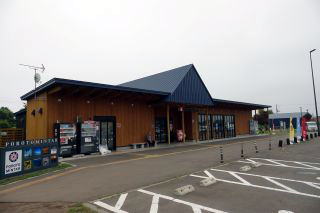 r
rPoroto MIntar

Goods of the Ainu culture

Poroto mintar
② Ainu Motifs Everywhere
Ainu symbolic patterns decorate everyday town features—from the postbox in
front of town hall to coin lockers and shop doors—expressing the community’s
identity as a center of Ainu culture.
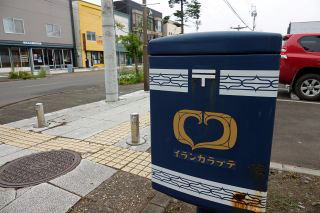
Postbox

Coin lockers
4. Specialty Product - Exquisite Shiraoi Beef
In 1968, Shiraoi Wagyu won the top prize at a Hokkaido
livestock fair, earning the town recognition as a prime Wagyu producer. In
2006, “Shiraoi Beef” was registered as a regional trademark, with ongoing
breeding improvements to produce even higher-quality beef nationwide.
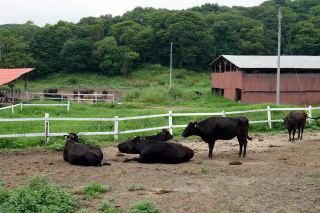
Shiraoi Wagyu
Shiraoi Beef can be enjoyed at local farm-owned restaurants
and shops, prepared in BBQs, hamburger curries, and burgers.

Shiraoi Beef
Each June, the town hosts the Shiraoi Beef Festival, complete with BBQ
areas to win over more fans.
Kojohama’s tarako (processed cod roe) is another well-known local
delicacy.
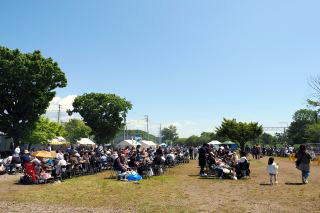
Shiraoi Beef Festival
5. Creative Reuse of Former School Buildings
Declining local industries and population have led to
several school closures. Shiraoi has repurposed these sites in innovative ways.
① Tobi-U Art Community
Founded in 1986 in the former Tobi-U Elementary School, this artists’
collective uses classrooms and the surrounding forest as a shared studio.
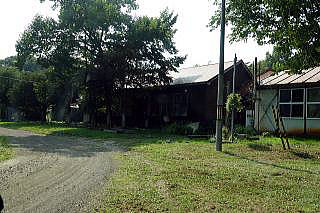
The former Tobi-U Elmentary school
Each September, they host the Tobi-U Art Festival, exhibiting works
indoors and displaying forest installations. In 2025, the event will run from
September 7–15.
② Nachu no Mori
Operated by a skincare company, this facility revitalized the former Kojohama
Junior High School into a colorful, modern building. Named Mori no Kosha
(“Forest Workshop”), it serves as a hands-on natural science museum for parents
and children.
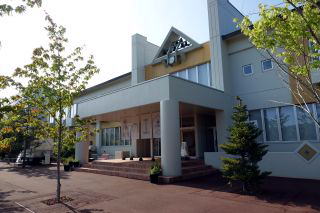
Renovated formar junior high school
6. Your Personal Guide to Shiraoi
For tailored sightseeing assistance, the Shiraoi
Omotenashi Guide Center, located in the Shiraoi Tourist Association office,
offers both standard and customized tours.

Guide
When visiting, it’s worth consulting them in advance about what you want to see
to ensure a memorable trip.
Shiraoi is more than a destination—it’s a living story of
nature, culture, and flavor. Whether you come for the Ainu heritage, the
pristine landscapes, or the exquisite Wagyu, you’ll leave with memories to last
a lifetime.
Picture provided
* Shiraoi-Town Hall(sightseeing)...0144-82-8214 HP is "here"
* Shiraoi sightseeing association ...0144-82-2216 HP is "here"
Copyright © 2009~ Oh! 元気 ねっと All Rights Reserved